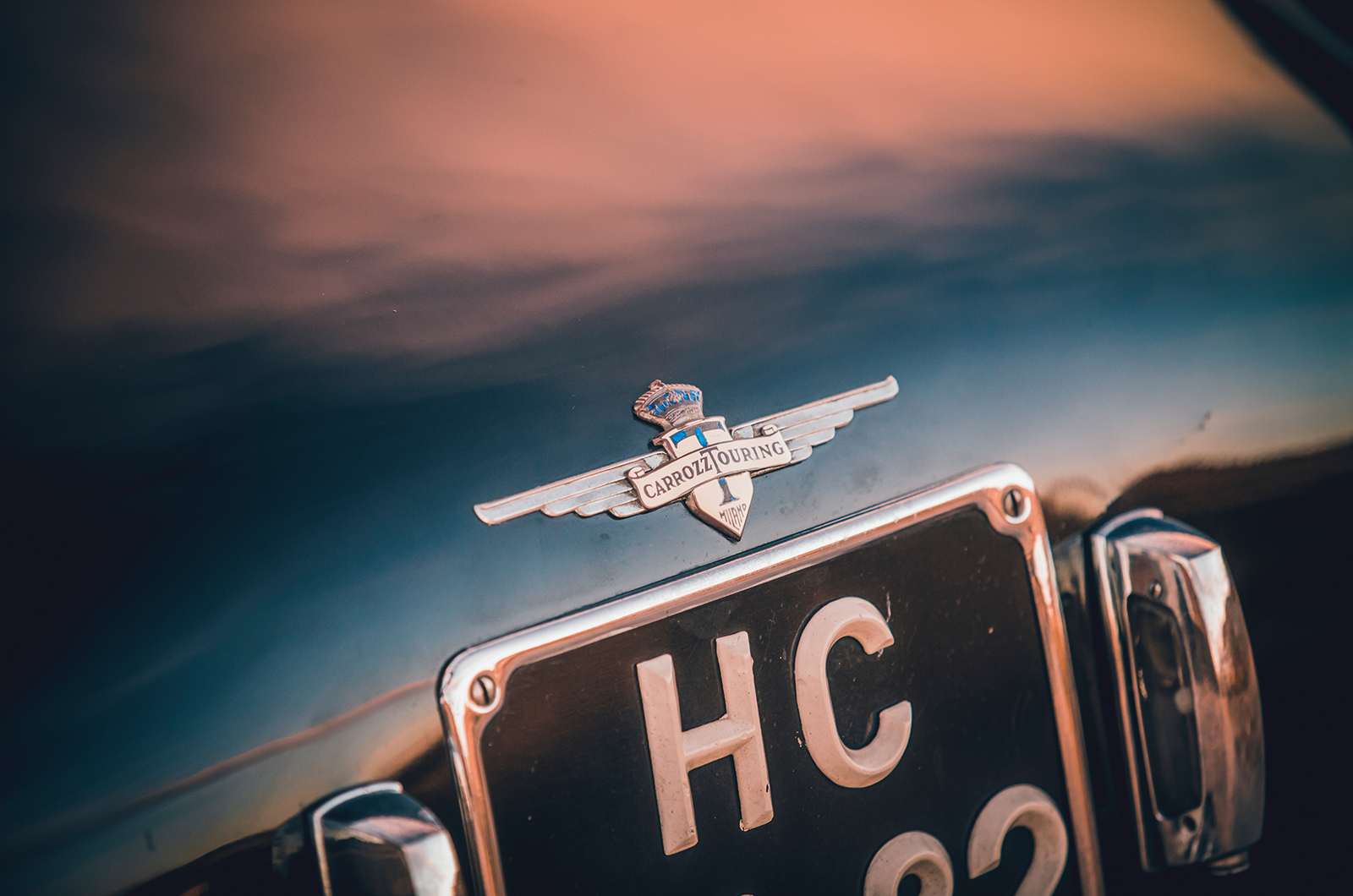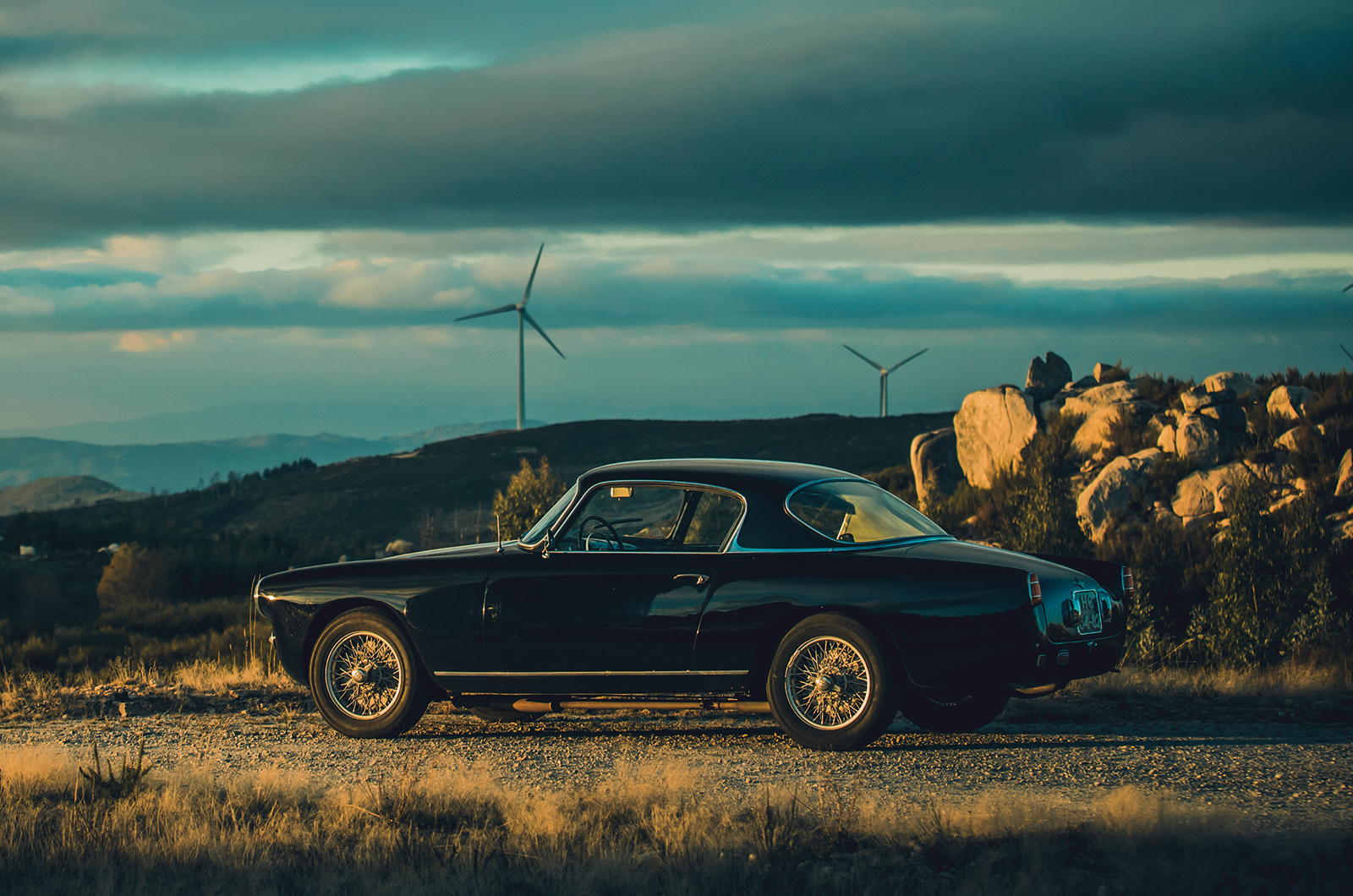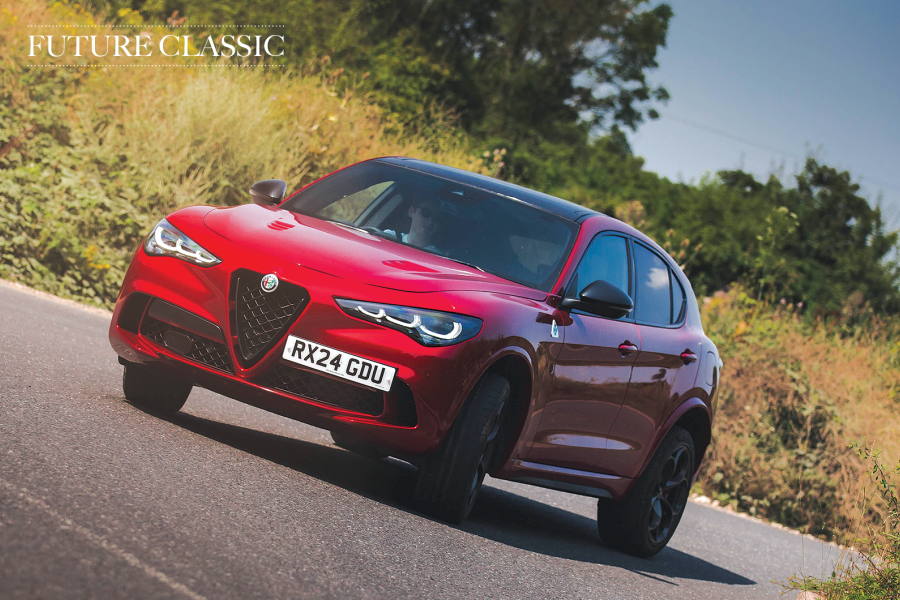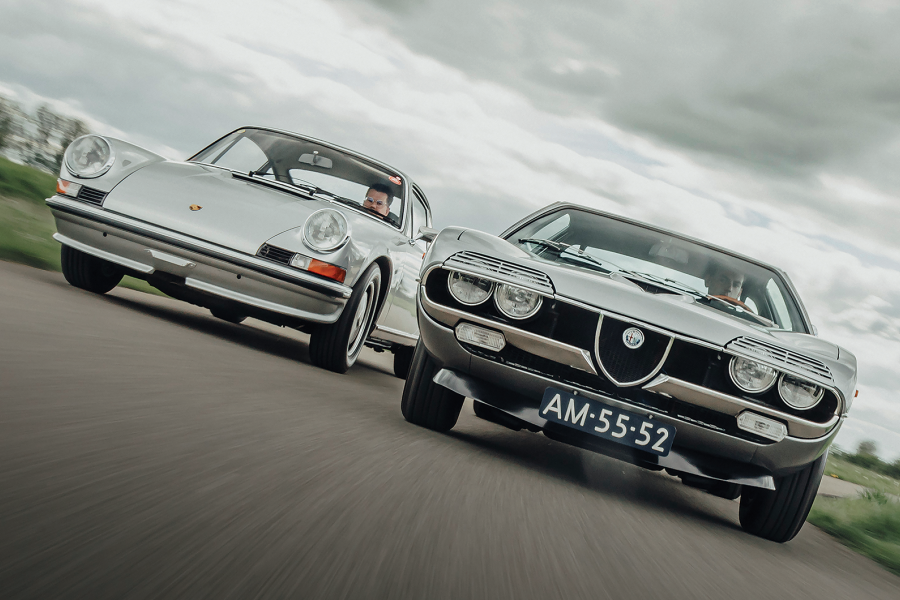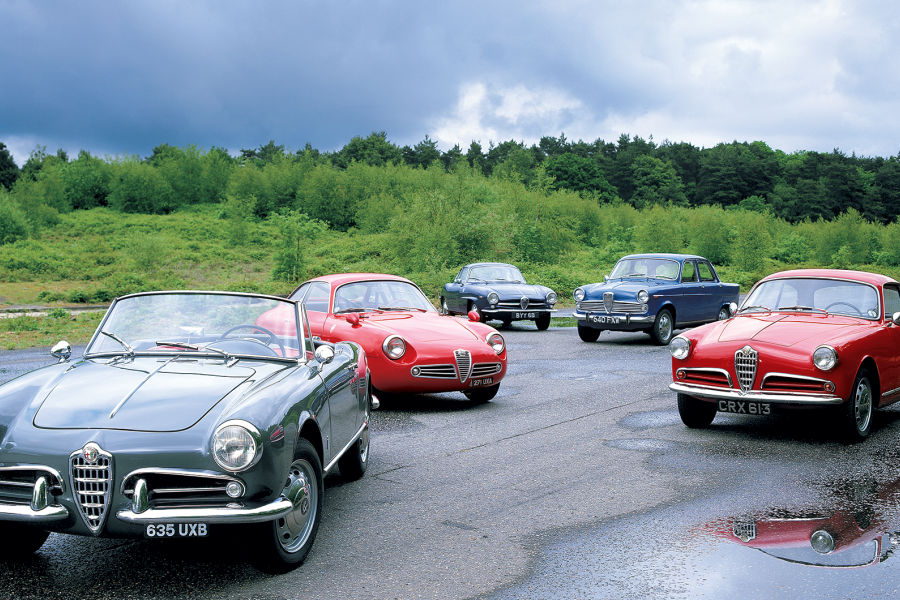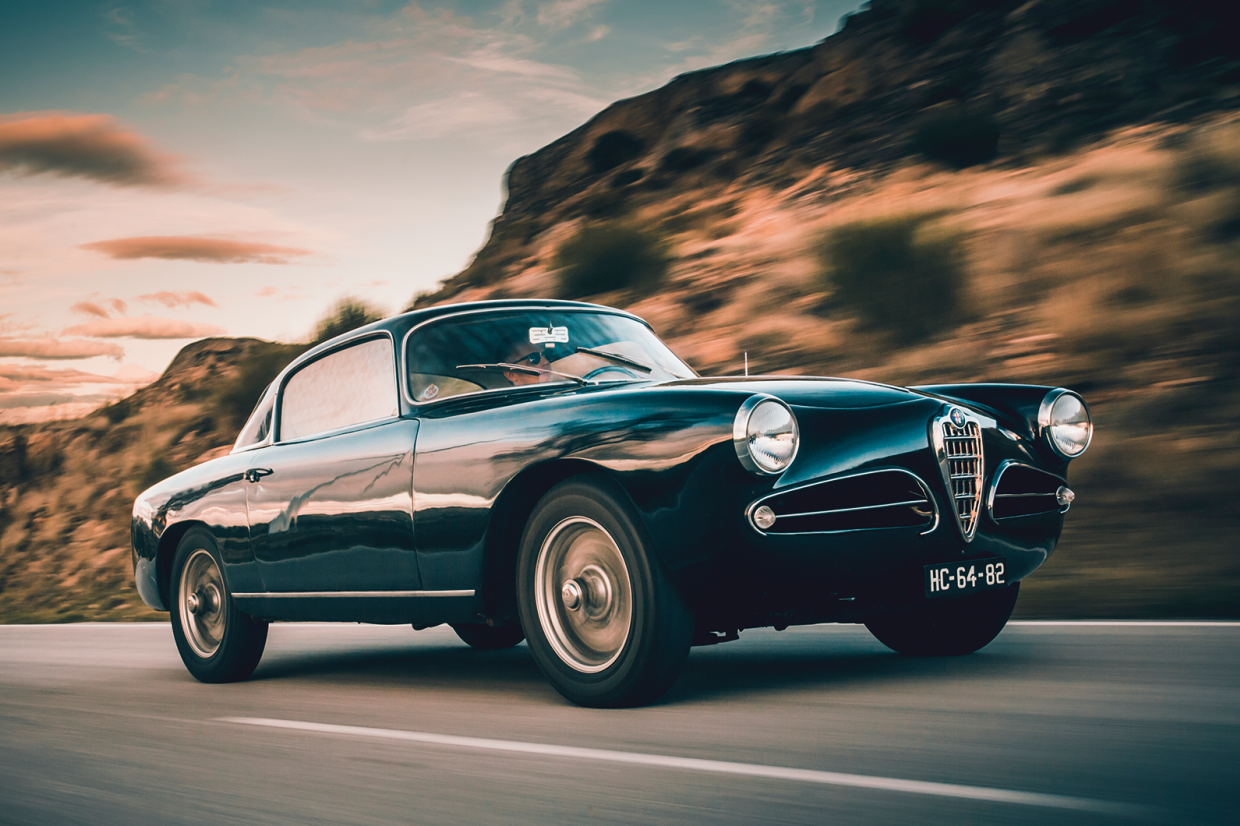
The sky is vast in all directions and curtained by golden-pink clouds.
It’s picturesque up here, that’s for sure; all scenic vistas, rock formations, pastel-hued villas and weather-worn barns.
Except the view isn’t the big draw.
Portugal’s Serra do Caramulo region is home to God’s own driving roads.
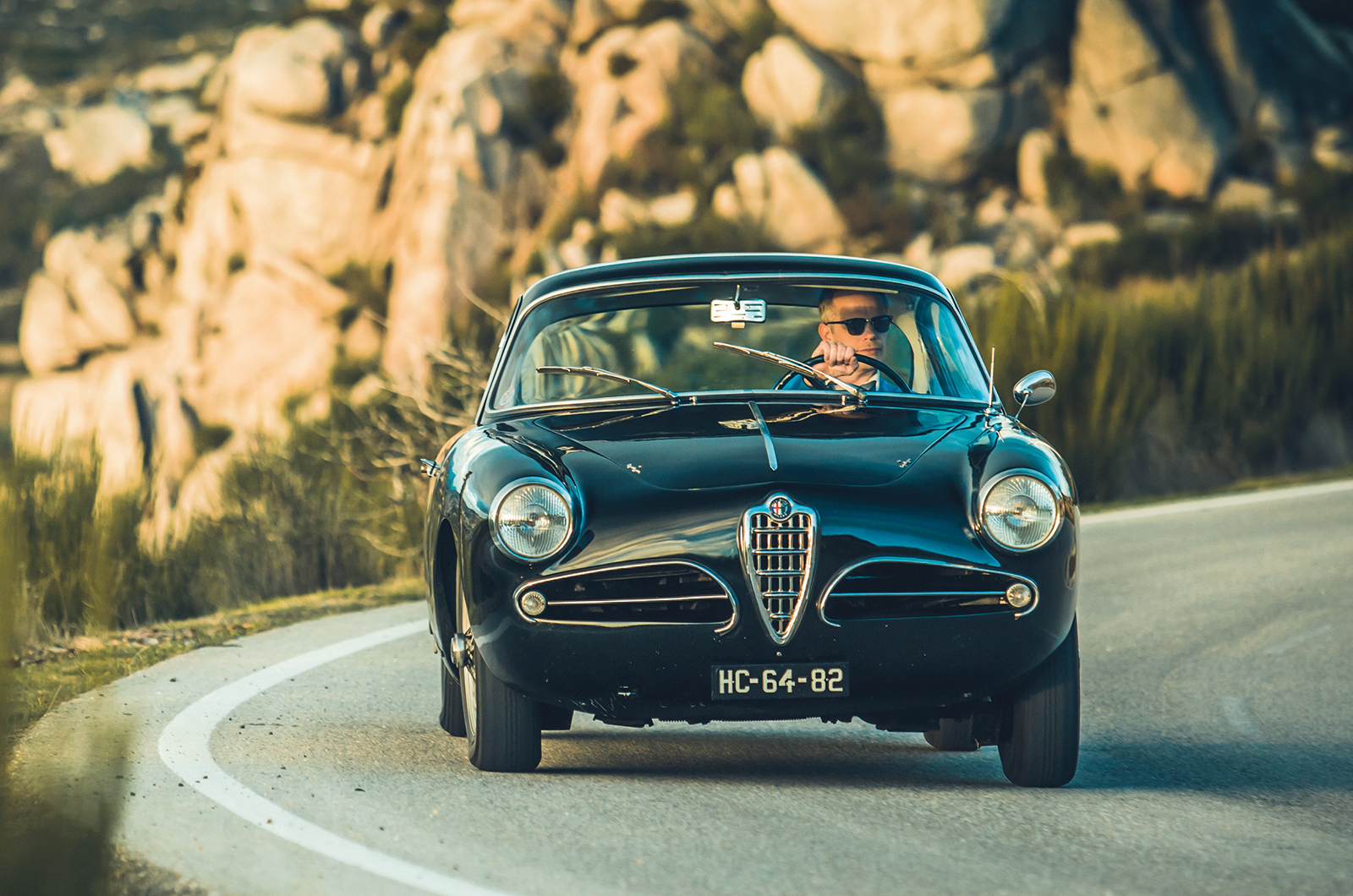
The Alfa Romeo 1900C Super Sprint is a faithful, entertaining companion on a twisty road
The main thoroughfare is a historic – and still-active – hillclimb course, each lane and farm track that stems from it seemingly more akin to a rally stage.
It’s easy to tell the locals from the tourists: they don’t lift for anything, a point brought home after a moped rider attempts to straight-line a series of switchbacks, which prompts millimetre-perfect avoidance action – but only on our part.
There’s not a lot to say about these roads that doesn’t end with gushy superlatives.
Savouring them aboard a 1956 Alfa Romeo 1900C Super Sprint only ramps up the sense of blissed-out reverie.

